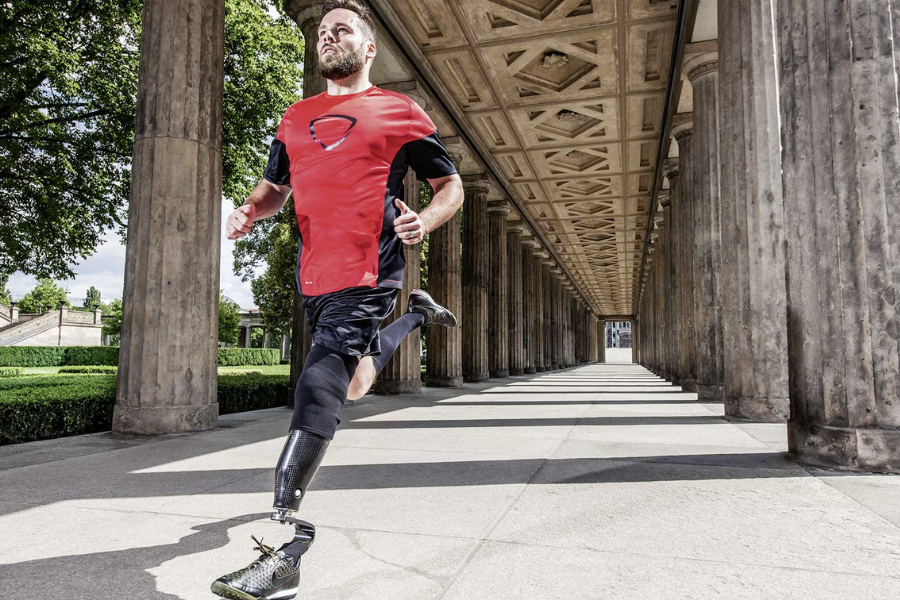Exercise with a sports prosthesis: here are your options
Getting regular exercise has a beneficial effect on your mood and overall health. Even after an amputation, pursuing an active lifestyle can improve your vitality and social life. If you already have a prosthesis, you might find that it restricts your movement intensity, and not having a prosthesis can limit your mobility altogether. Special sports prostheses have been developed to help solve these issues, but which ones can you choose from?
If your prosthesis for everyday wear stops you from engaging in certain activities, you may be eligible for a sports prosthesis. Before requesting a special sports prosthesis, you will have to discuss your options with your physiatrist and/or orthopedic consultant. Please note that special sports prostheses are not covered by basic healthcare insurance. An orthopedic consultant can tell you more about your options and help you submit a request.

Multitude of factors
Fitness and sports prostheses come in all shapes and sizes. Which prosthesis suits you best depends on a multitude of factors, such as your amputation level: did you have an above-the-knee or below-the-knee amputation? And how big is the gap between your socket and the ground? It is also important to consider what you will be doing with your new prosthesis. Read the blog 'How to choose the right sport after an amputation'.
A sports prosthesis for a lower leg amputation
If you had a below-the-knee amputation, you will need a prosthetic sports foot, because in ball sports, such as table tennis, volleyball or korfball, you largely use your forefoot and heel to stand and move properly. For these activities, a Challenger foot is the optimal solution. If you have your heart set on running or jogging, however, you will make more use of your forefoot, which means that blades like the Runner and Sprinter are better options. Blades are often used for short distances and athletics.
A prosthetic sports knee joint
If you had an above-the-knee or through-the-knee amputation, you will need both a prosthetic knee joint and a prosthetic foot to exercise. The main difference between a prosthetic knee joint for everyday use and a prosthetic sports knee joint is the speed at which the knee bends and extends. Again, key points to consider are your sport of choice and the gap between your socket and the ground. Will you go for a comfortable Runner? Or would you rather go for the faster Sprinter?
Orthopedic consultant
Your orthopedic consultant will work with you to configure your prosthesis. When you’re running, for example, your foot should not touch your buttocks and you should be able to fully extend the knee. We recommend that you take your first steps with your sports prosthesis in a safe environment, with the help of a companion. Another top tip: always wear a helmet and wrist, elbow and knee pads when trying out your sports prostheses for the first few times.
Which sports prosthesis is right for you?
In a nutshell, which sports prosthesis is best for you depends on many different factors and will differ from one person to the next. That’s why we’d love to hear your story! Which sports prosthesis do you have and how did you decide which one was best for you? Or are you looking for a sports prosthesis and do you need tips? Let us know in the Movao forum!